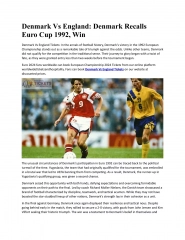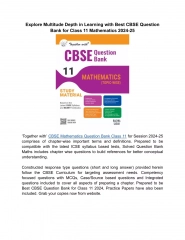
Understanding Relational Algebra in Databases
Explore the fundamentals of relational algebra in databases, including operands, operators, set operations, and the use of relations to represent data. Learn about tuples, attributes, and how relational algebra operations are performed on sets to manipulate data effectively.
Download Presentation

Please find below an Image/Link to download the presentation.
The content on the website is provided AS IS for your information and personal use only. It may not be sold, licensed, or shared on other websites without obtaining consent from the author. If you encounter any issues during the download, it is possible that the publisher has removed the file from their server.
You are allowed to download the files provided on this website for personal or commercial use, subject to the condition that they are used lawfully. All files are the property of their respective owners.
The content on the website is provided AS IS for your information and personal use only. It may not be sold, licensed, or shared on other websites without obtaining consent from the author.
E N D
Presentation Transcript
Relational Algebra COMP3211 Advanced Databases Dr Heather Packer hp3@ecs.soton.ac.uk
What is a Relational Algebra? An Algebra is a mathematical system consisting of: Operands variables or values from which new values can be constructed Operators symbols denoting procedures that construct new values from the given values A Relational Algebra Operands relations or variables that represent relations Operators common things that can are performed on relations 3
Relational Algebra Set Operations Relational Database Specific Operations Set union Selection Set intersection Set Functions Projection - Set difference sum Join X Cartesian product avg Renaming Set Division count any max min 4
Relational Algebra The input of a relational algebra operator is one or more relations The result of an operation is always a relation Necessary to use relational algebra in a cascaded manner Set1 Set Operation1 Set2 Output Set Operation2 5
Relations as Subset of Cartesian Products of Sets S1 x S2 = Set S1 (Student IDs) Set S2 (Student Name) 68943 94433 78215 Mary John William 68943, Mary 68943, John 68943, William 94433, Mary 94433, John 94433, William 78215, Mary 78215, John 78215, William = x Students S1 x S2 ID Name William John Mary tuple 68943 94433 78215 7
Relations as Subset of Cartesian Products of Sets S1 x S2 = Set S1 (Student IDs) Set S2 (Student Name) 68943 94433 78215 Mary John William 68943, Mary 68943, John 68943, William 94433, Mary 94433, John 94433, William 78215, Mary 78215, John 78215, William = x Domain Domain Students S1 x S2 ID Name William John Mary 68943 94433 78215 8
Tuples and attributes R D1 D2 Dk is a set of k-tuples R can be represented in a table with k columns Values from domain Di are the only values allowed in the ith column The columns in relational data models have names called attributes Students ID Name William John DeptID ECS ECS In the relation Students, attributes are: ID, Name, DeptID 68943 94433 9
Properties of Relations A relation R(A1, ,Ak) has the following properties: 1. Each row represents a k-tuple of R 2. The values of an attribute are all from the same domain 3. Each attribute of each tuple in a relation contains a single atomic value 4. The ordering of rows is immaterial (relations are just sets) 5. All rows are distinct (relations are just sets) 6. Named perspective: the semantics of each column is conveyed its name 7. Named perspective: the ordering of the attributes is not significant 8. Unnamed perspective: the ordering of attributes is significant (we access columns by their positions) 10
Relational Algebra Set Operations Relational Specific Operations Renaming Set union Selection - Set difference X Cartesian product Projection Set intersection Join 12
Union The union of two relations is the set of tuples where each tuple appears in either set R S B C B 1 3 4 5 C 2 4 4 6 B 4 5 C 4 6 = 1 2 3 4 R S = {(a1, ,ak): (a1, ,ak) is in R or (a1, ,ak) is in S} Note: no duplicate tuples 14
Union The Union operation must work on relations with the same attributes R S B C D 4 5 E 4 6 = ? 1 2 3 4 If relations have different attributes, we can rename the attributes of S by using the renaming operator 15
Union Some versions of the algebra allow the attributes of R and S to have different names R S R S B C F 1 3 4 5 G 2 4 4 6 D 4 5 E 4 6 = 1 2 3 4 The columns in the result are given new names 16
Difference The difference between R and S is all the tuples that appear in R but not in S R S B 1 3 C 2 4 B 3 5 C 4 6 B 1 C 2 - = R - S = {(a1, ,ak): (a1, ,ak) is in R and (a1, ,ak) is not in S} 17
Cartesian Product R X S R S R X S A X Y Z X Y Z R.B 2 3 3 2 3 3 S.B sda sda sda bfd bfd bfd C 1 1 1 0 0 0 B sda bfd C 1 0 A B X = = X 2 Y 3 Z 3 Notice the clashing attribute names are renamed 18
Cartesian Product Cartesian Product of relations R X S, given R and S having a m-ary and n-ary relation respectively, is calculated by: Every tuple of R is paired with every tuple of S The tuples are concatenated together to give a (m+n)-ary tuple Note that the resulting size of the the relation is the product of the size of each relation. The Cartesian Product can get large Concretely: R S = {(a1, ,am,b1, ,bn): (a1, ,am) is in R and (b1, ,bn) is in S} |R S| = |R| |S| 19
Set Operation Rules Union Commutativity does hold because order within a set is unimportant : R S = S R Associativity does hold: R (S T) = (R S) T Difference: Commutativity does not hold for Difference: R - S S R (except if R=S) Associativity does not hold for Difference: R (S T) (R S) T Cartesian Product: Note: Ordering of attributes is important here Commutativity does not hold: R S S R Associativity does hold: R (S T) = (R S) T Distributivity across Union does hold: R (S T) = (R S) (R T) 20
Commutativity does not hold for Cartesian Product named R S S R Name Union Co-op Costa Addr Campus Burgess Road Burgess Road Addr Campus Burgess Road Burgess Road Name Union Co-op Costa x x Name Union Co-op Costa Addr Campus Burgess Road Burgess Road Addr Campus Burgess Road Burgess Road Name Union Co-op Costa 21
Commutativity does not hold for Cartesian Product unnamed R S S R $1 Burgess Road Burgess Road $1 Co-op Costa $1 Co-op Costa $1 Burgess Road Burgess Road x x $1 Co-op Costa $2 Burgess Road Burgess Road $1 Burgess Road Burgess Road $2 Co-op Costa 22
Derived Operations Some operations can be derived by other relational algebra operations Intersection: R S = R (R S) R - S R S B 1 C 2 B 1 3 C 2 4 B 3 5 C 4 6 = - R S R R - S B 1 3 C 2 4 B 1 C 2 B 3 C 4 = - 23
Renaming Operator The renaming operator takes one relation and changes attribute names B / A (S) Returns a relation with schema identical to S but the attribute name A has been replaced by B Rename more than one attributes using , in the subscript E.g. let S with schema S(A, B, C, D, E) X/B,Y/D(S) Creates a relation with schema S(A, X, C, Y, E) 25
Renaming Operator Example If the relational algebra variant needs same attribute names for union Then use the renaming operator R S B 1 3 C 2 4 D 4 5 E 4 6 = 26
Renaming Operator Example If the relational algebra variant needs same attribute names for union Then use the renaming operator B/D, C/E(S) R B/D, C/E(S) B/D, C/E(S) R B 1 3 4 5 C 2 4 4 6 B 1 3 C 2 4 B 4 5 C 4 6 = 27
Projection Operator The Projection Operator removes or changes which attributes appear in the relation L (R) It removes all columns whose attributes do not appear in the list L Columns may be re-arranged according to the order in the list Any duplicate rows are also eliminated 28
Projection Operator Example Food,Price(Sells) Sells Shop Union Union Co-op Co-op Costa Costa Food Apples Bananas Apples Peaches Bananas Peaches Price 0.50 0.80 0.50 0.75 0.90 1.10 Units 2 4 5 3 1 1 Food Apples Bananas 0.80 Peaches Bananas 0.90 Peaches Price 0.50 0.75 1.10 Note: only one entry for apples 29
Extended Projection Some algebras extend projection to allow arbitrary expressions involving attributes B+C A(R) Arithmetic on attributes eg B + C A Allows duplicate occurrences of same attribute eg: B,B( ) = B 1 3 C 2 4 B1 1 3 B2 1 3 30
Extended Projection Example Food, Price/Units Cost (Sells) Sells Shop Union Union Co-op Co-op Costa Costa Food Apples Bananas Apples Peaches Bananas Peaches Price 0.50 0.80 0.50 0.75 0.90 1.10 Units 2 4 5 3 1 1 Food Apples Bananas 0.20 Apples Peaches Bananas 0.90 Peaches Cost 0.25 0.10 0.25 1.10 31
Selection Operator The Selection Operator returns a subset of the relation where the tuples satisfy a predicate (R) R is a relation and is a condition or predicate The condition is an expression built from: Comparison operators =, <, >, , , applied to operands that are constants or attribute names (or positions) The Boolean logic operators , , applied to basic clauses. 32
Selection Operator Predicates Example predicates: Price > 0.70 Shop = Co-op (Shop = Co-op ) (Units > 1) We reference columns via attribute names or via their component number (position) by using $ Shop = Co-op $1 = Co-op $4 > 1 33
Selection Operator Example Food= Bananas ( Units>1(Sells)) Sells Shop Union Union Co-op Co-op Costa Costa Food Apples Bananas Apples Peaches Bananas Peaches Price 0.50 0.80 0.50 0.75 0.90 1.10 Units 2 4 5 3 1 1 Shop Union Food Bananas Price 0.80 Units 4 This is equivalent to Food= Bananas Units>1 (Sells) 34
Algebraic Laws for the Selection Operation Algebraic laws can be useful in query optimization 1( 2(R)) = 1 2(R) Commutative: 1( 2(R)) = 2( 1(R)) (R S) = (R) S if mentions only attributes of R Cartesian product is expensive so reducing the size of R is beneficial 35
Sets vs. Multisets (Bags) A Multiset or Bag is like a Set but elements may appear more than once Example: R = {1,3,3,6,6,6,7}, S ={1,1,6,6,7} are both multisets Union of two multisets: {1,3,3,6,6,6,7} {1,1,6,6,7} = {1,1,1,3,3,6,6,6,6,6,7,7} Difference between two multisets: {1,3,3,6,6,6,7} - {1,1,6,6,7} = {3, 3, 6} Cartesian product: {1, 3, 3} {1, 1, 6} = {<1,1>, <1,1>, <1,6>, <3,1>, <3,1>, <3,6>, <3,1>, <3,1>, <3,6>} 37
Operations on Multisets (Bags) Given (x, B), defined as the number of occurrences of x in multiset B Union R S (t, R S) = (t, R) + (t, S) for all t in R and S {1,2} {2} = {1,2,2} Difference R S (t, R S) = max{ (t, R) (t, S), 0} for all t in R and S {1,2, 2} {1,1,2} = {2} Intersection R S (t, R S) = min{ (t, R), (t, S)} for all t in R and S {1} {1,1,2} = {1} Cartesian Product: ( tt , R S) = (t, R) * (t , S) for all t in R and t in S {1,1} {2} ={<1,2>,<1,2>} 38
Operations on Multisets (Bags) Projection: If R is a multiset, then X(R) is also a multiset If R is a set, then X(R) may be a multiset $1({<1,2>,<1,3>}) = {<1>,<1>} Selection: If R is a multiset, then the selection (R) may be a set If R is a set, then the selection (R) is a set 39
Multisets in SQL SQL is multiset based Efficiency: Duplicate elimination may take quadratic time For example, after a projection Necessity: Eliminating duplicates might result in information loss/errors (e.g., in computing averages) How to eliminate duplicates in SQL? Use the DISTINCT keyword SELECT DISTINCT <attribute list> FROM <relation list> 40
Next Lecture: Relational Algebra 2






















